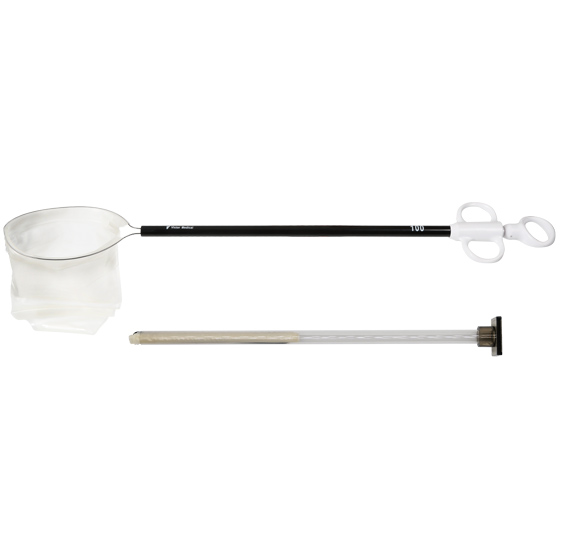With the development of minimally invasive surgery, many open surgeries in the past were gradually replaced by intracavitary surgery. Due to the small incision, it is difficult to remove the excision, which brings trouble to the surgeon. In laparoscopic surgery, fibroids crusher must be used when large tissue specimens are removed from small abdominal incision. However, there are some complications in the process of using the fibroids crusher. In order to follow the principle of tumor free, doctors used endoscopic retrieval bag in clinical operation to reduce the risk of potential tumor tissue dissemination.
Traditionally, the tension strength of the self-made collection bags (gloves, plastic bags) in the operating room is poor, and there are no standard requirements for their production, no strict specification or supervision of disinfection, which mean existing risks.
The disposable Endobag is used in clinical minimally invasive endoscopic surgery to collect human tissue specimens or foreign bodies and take them out. It is mainly composed of a handle and a bag, which can solve the problems of small incision and difficult removal of resection in minimally invasive surgery, and prevent the implantation and metastasis of tumor tissue as well as the ectopic growth of normal cells (such as endometriosis).

(1) Applicable departments:
General surgery department
Gastrectomy, small bowel resection, appendectomy, total colectomy, radical resection of colon cancer, resection of rectal cancer, hepatectomy, liver biopsy, cholecystectomy, drainage of pseudocyst, pancreatoduodenectomy, and pancreatic cancer resection.
Urology
Nephrectomy, ureterolithotomy, bladder diverticulectomy and bladder cancer resection were performed.
Gynecology
Ovarian surgery, uterine surgery.
(1) The nickel-titanium memory alloy expands the ring, pushes the handle, and the Endobag can be opened automatically, which is convenient for collecting surgical resections;
(2) Designed according to minimally invasive theory, the surgical area can be accessed through a 10mm trocar;
(3) The Endobag membrane is made of medical implant material TPU, and nickel titanium memory alloy stent is also made of this material;
(4) The Endobag membrane is soft and transparent, which does not affect the surgical field of vision, and this high-density film prevents leakage of body fluids and cells.